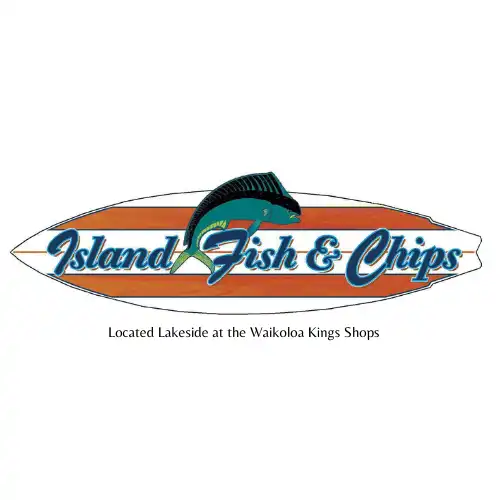Business Monday: Two festivals bring attention to growing Big Island cacao industry
What does it take to create rich, flavorful chocolate from cacao beans grown so easily across the island? Farmers, chocolate producers, culinary artists, hospitality workers and connoisseurs – expert to amateur – will have a chance to find out with two festivals in the next two months.
The events will highlight the growth of cacao farming and chocolate producing on the Big Island and how the industry can expand the agriculture and tourism sectors important to the island’s economy.

Running Thursday through Saturday, the 12th annual Big Island Chocolate Festival in Waikōloa aims to advance Hawaiʻi’s cacao industry by celebrating chocolate with seminars, culinary demonstrations, a guided tour and a gala that serves as a fundraiser for local culinary students. The event is hosted by the Kona Cacao Association.
A month later on May 10, the fourth annual Hilo Chocolate Festival will take place at the Hilo Hawaiian Hotel from 9 a.m. to 4 p.m. The free event is hosted by the East Hawai‘i Cacao Association, with vendors that include farmers and producers who only use cacao from the Big Island.
While both festivals focus on cacao farmers and chocolate makers, the festival in Waikōloa will dive into cacao use for the culinary and hospitality industries and how current farms and businesses can expand economically.
On Thursday, Kona’s Original Hawaiian Chocolate Factory will be offering a guided plantation and tasting tour of a producing cacao orchard in Keauhou at 9 a.m. Tickets are $30 each or $50 for two. The rest of the event will be at the Waikōloa Beach Marriott Resort & Spa.
Farm seminars will begin on Friday, with Dr. Nat Bletter’s “Best Practices for Cacao Fermentation,” which will focus on the necessary steps and importance of cacao fermentation, from noon to 1 p.m.

“Getting well fermented beans is a huge challenge for farmers and chocolate-makers, because the process has to occur within a couple weeks of picking the cacao, which is usually before the product is shipped off to another country for resale and then processing,” Bletter said. “The amazing thing about making chocolate in Hawai’i is that we can work closely with cacao farmers to dial in the fermentation and drying process for great tasting chocolate.”
Bletter owns Madre Chocolate in Oʻahu and he purchases raw, fermented beans directly from farmers and cooperatives. He roasts and processes them in small batches to craft chocolate bars.
“It is a rare occurrence to have chocolate businesses and farmers together, especially with the amount of camaraderie there is,” said Maddy Smith, owner of Barefoot Chocolatini, a consulting company for Hawaiʻi chocolate growers and makers. “Cacao farmers have the opportunity to make chocolate if they want to and chocolate producers could farm cacao, too. The goal is to create an all-encompassing industry for people who live on the island.”

As a former cacao farmer and current consultant, Smith will be teaching “Taste, Tour, Thrive-Building a Sustainable Cacao Experience” during the Big Island Chocolate Festival. This class will dive into how to create an engaging and educational tour experience while building a profitable and sustainable revenue model.
“There are some amazing cacao farmers here, but they donʻt really know how to market themselves or create an experience that would bring people to their farm,” Smith said. “What I’ve learned from offering tastings and retreats and experiencing them myself, every farm has a story and itʻs the story that helps draw people in and keeps them intrigued.”
Through her work at Barefoot Chocolatini, Smith helps farmers create a vision of what they want a tour and tasting experience to be like, gives them advice on where to start and what they may be forgetting, and will help execute those plans.

After Smith’s class, Stacey Chun, Hawai‘i Island Department of Agriculture Entomologist, will give informational updates on the Queensland Longhorned Beetle, which is the most destructive insect pest to cacao. “Growing Healthy Cacao-Controlling the Queensland Longhorned Beetle in Hawai‘i” will include a brief description about its biology, behavior, management and current research from 2 to 3:30 p.m.
The last class will be “The Importance of Properly Tempering Chocolate” by world pastry champion Chef Stéphane Tréand from 3:45 to 5 p.m. Tréand will offer tips on tempering chocolate and crafting chocolate pieces for a sculpture to be constructed during a 12:30 p.m. culinary demonstration the next day.
Culinary demonstrations will fill the day on Saturday, beginning with “Using Hawaiian Chocolate to Create a Plated Dessert” by Pastry Chef Stevie-Ray Walker of Mauiʻs Wailea Beach Resort from 9:30 to 10:45 a.m.

From 11 a.m. to noon, Executive Pastry Chef Helen Hong of the Mauna Lani, Auberge Resorts Collection will present “Chef-Level Plated Dessert Made Simple.”
“Creating an Artistic Chocolate Showpiece” will be follow from 12:45 to 2:30 p.m. as Tréand demonstrates how to mold and color chocolate for a showpiece sculpture.
The farm seminars cost $45 for all four, or $60 for two attendees, and the culinary demonstrations with tastings are $89 for all three. More information on the gala and tickets is available online.
While Big Island Chocolate Festival is aiming to foster cross-industry partnerships and expand the Hawai’i cacao industry, the Hilo Chocolate Festival is highlighting the current cacao community of farmers and chocolate makers who only use cacao from Hawaiʻi Island.

“Hilo Chocolate Festival highlights Big Island-grown cacao and is our way of getting locals to support local chocolate makers,” said Daeus Bencomo, owner of Lavaloha Chocolate Farm in Hilo. “Everyone at the festival will be offering their wealth of knowledge while sharing their Hawaiʻi Island-grown and made chocolate.”
If weather permits, up to 100 festival attendees will receive a free tour of Lavaloha Chocolate Farm with registration beginning at 9 a.m. at the festival. Space is limited on a first-come, first-serve basis.
With plenty of samples provided at each booth, attendees will be able to vote for their favorite chocolate in the following three categories: best milk chocolate, best dark chocolate and best chocolate with inclusions.

Smith, the former president of the East Hawai‘i Cacao Association, also will be participating in the Hilo Chocolate Festival by giving out cacao seedlings to attendees at a booth that will display the 10 step, beans-to-chocolate process.
“There are many chocolate farmers on Hawaiʻi Island that are very knowledgeable and have high standards,” Smith said. “They want to get together and share tips on how to grow cacao in a way that supports the environment. Itʻs a rare treat to see farmers and makers in one room all using cacao from one place.”
More information can be found at the Hilo Chocolate Festival website.

According to Smith, there is need for both the Big Island and Hilo chocolate festivals. The industry is growing and different farms and businesses have different needs, but the underlying goal is the same.
“I think with both festivals, everyone who participates wants to make sure that present and future farmers and producers are growing a quality product with intention, care and respect for the people and the place we live,” Smith said.
Sponsored Content
Comments








